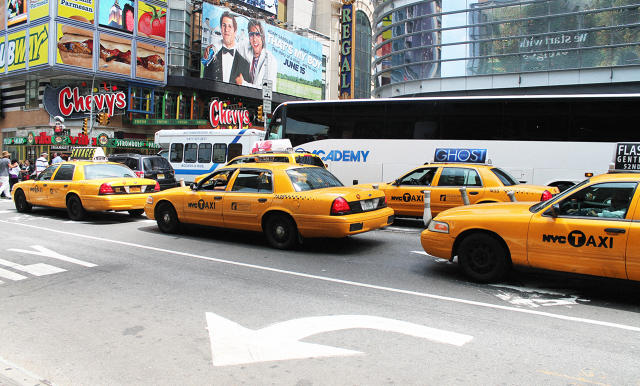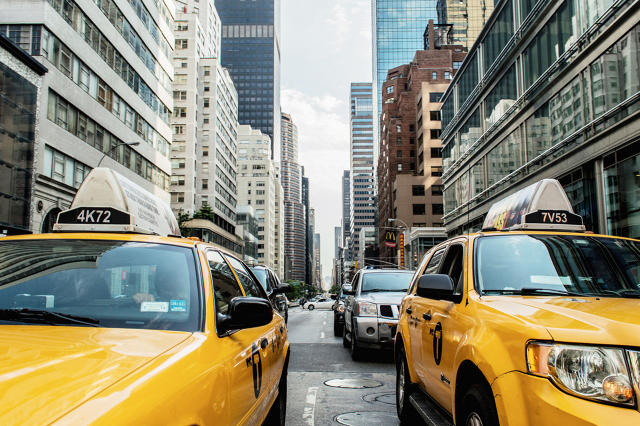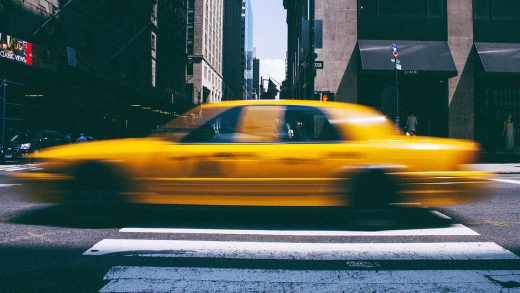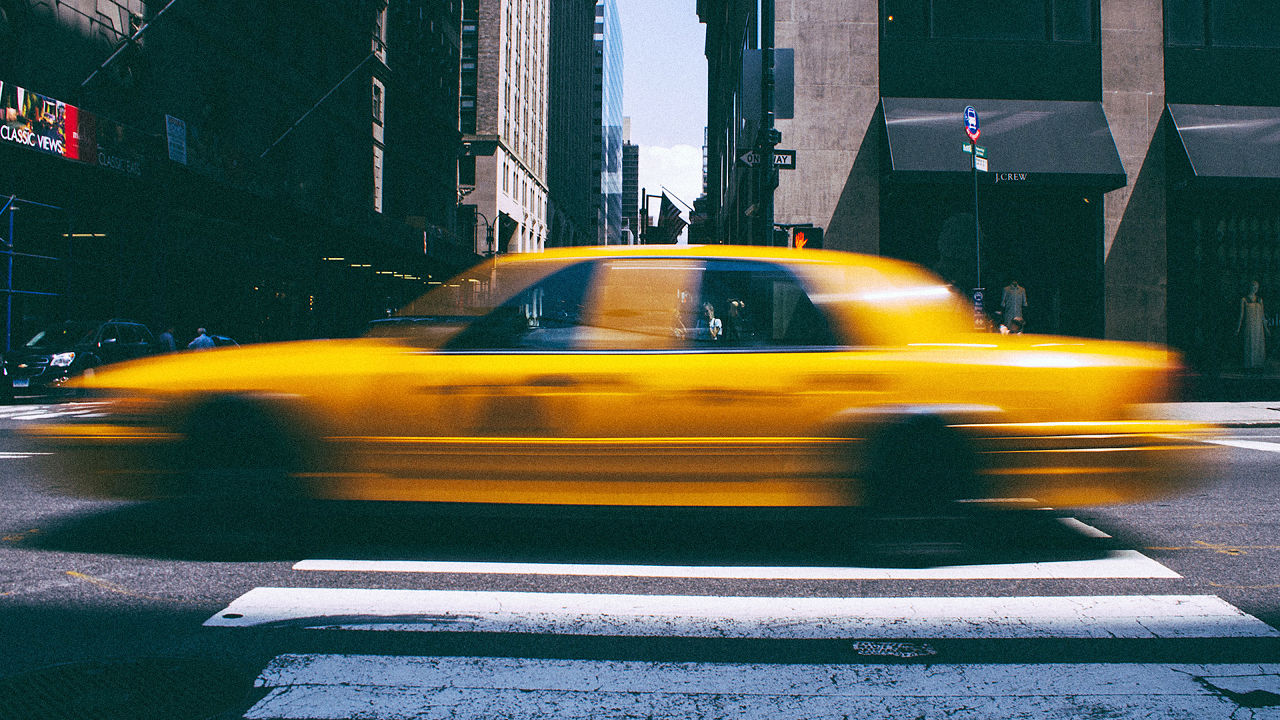Two Questions every metropolis must Ask in the Age Of autonomous Taxis
The taxibots are coming. GM and Lyft are the usage of totally different words to describe them, saying that they’ll accomplice to make an “integrated network of on-demand self reliant automobiles a part of people’s day-to-day lives.” but that’s simply the great distance of claiming “Johnny Cabs.” (you know, from complete recall.)
So whether or not we wish to name them taxibots, robotic cabs, or the inevitable brand names in order to apply, know-how companies and automakers are already hard at work right now solving the design and engineering challenges required to make them a reality.

This work is essential, but there’s numerous different essential work that has nothing to do with lasers, sensors, consumer interfaces, or 3-d maps, and the whole thing to do with the strategic picks particular person cities will wish to make for themselves. What’s proper for Paris might not be right for Peoria, so each city must be making ready now to respond to two essential questions about the type of taxibot community it desires for its particular future.
For revenue vs. For the folks: Who will personal the city’s taxibot network?
How a city solutions this question expresses what it believes—at a philosophical stage—it should be offering to all electorate. Most cities within the developed world have evolved to provide—or at least take care of the availability of—the whole thing from water and electricity to mass transit and rubbish assortment. but why these services and products and no longer others, like web connectivity? Are voters better served through business?
maybe, possibly not. In large brush strokes, industry desires consumers that it will possibly serve most effectively and most profitably, which is why rural communities are far less more likely to have broadband connectivity than their urban counterparts. In in a similar way big brush strokes, cities tend to take into consideration the services they provide in more egalitarian phrases, which is why all neighborhoods get cease indicators—no longer just the rich ones. This difference, between industries and cities, will inform the design and operation of completely different taxibot networks.
So if a metropolis believes that each one of its citizens deserve equal access to transportation—together with electorate on the edges of its geographic limits, electorate with disabilities, and other people who shall be much less convenient for trade to serve—then we imagine the reply to this query of ownership is obvious: the town must own and operate its personal taxibot community, moderately than merely taxing and regulating an industry-run network.
but what “possession” of a taxibot network if truth be told manner is probably confusing. That’s because a taxibot network will include at least three core parts: 1) the taxibot fleets; 2) a bodily infrastructure that allows the taxibots to be in contact with the town, like an problematic community of Wi-Fi routers; and 3) a set of working programs and protocols that enables the taxibots to keep up a correspondence with each and every different, as well as with other cars on the street.
Who will own the taxibot fleets is an open query. It can be a choice of small firms, as is at the moment the case in lots of American cities, or it may be that one company is granted an exclusive citywide taxibot license. Or, the town itself might make a selection to own the native fleet. Regardless, the get admission to factors for vehicle-to-infrastructure communique will have to be owned and managed by town. And town will have to have profound influence over the protocols that govern that communication as well as the car-to-car conversation.
this will push the city out of doors of its remedy zone. In the same approach that carmakers should turn into instrument companies—or change into basically hardware producers for technology firms—cities should do the identical, or grow to be basically “street suppliers” to trade-run taxibot networks. This evolution will probably be very important to the city’s means to supply equal access to transportation, and to align the pursuits of cities and voters with the desires of carmakers and their shareholders.

Optimization vs. Monetization: Who will personal the info and the way will they use it?
each taxibot can be a node on a network, producing all kinds of information. this information will be precious for the same reasons that any more or less consumer information is effective: it can be used to enhance products and services (which is a good factor) and market things to folks that they won’t need (which is a foul factor). At a high level, we imagine a city that owns its own taxibot community will also personal the information generated by way of the community on behalf of voters for the purposes of repeatedly optimizing network efficiency and integrating with different city-run services. in this state of affairs, a metropolis owns the taxibot-generated knowledge, and insurance policies governing its use are managed by using town.
however, a metropolis that opts for industry-run taxibot networks could unintentionally create opportunities for those networks to milk passenger information for the purposes of competing with other public transportation techniques and monetizing knowledge through promotion structures that don’t deliver any merit to electorate. Theoretically, a metropolis might also choose to monetize the information through merchandising systems for the purposes of offsetting electorate’ fare payments, primarily developing the taxibot equivalent of the Amazon Kindle “With different offers.”
both way, we imagine there is already no future for the anonymous use of public transportation, a future already signaled by the upward thrust of cashless fare funds. This will be upsetting for a lot of, however the emergence of taxibot networks will finalize the top of nameless use, forcing the town to have interaction within the prison and ethical complexities of data possession and take into account how it’ll—and won’t—use taxibot passenger data. industry has been grappling with private information and privacy concerns for a long time now, as have many cities. but others will need to begin working thru these complexities now to seize up.
that is far more than just coverage
These questions about who must personal a city’s taxibot community and the info it generates sound like potentially boring governmental coverage issues. they are definitely not. completely different solutions to those questions create starkly different futures that work very otherwise for citizens. They even appear starkly totally different. believe that la could reinforce 1,000,000 two-seat taxibots with the aid of 2040. Now think about all of these taxibots are owned via an entity or entities instead of the town itself; that’s a million branded autos occupying metropolis streets.
In a simple evolution of the illuminated placard adverts atop cabs as of late, maybe these future taxibots are even displaying excessive-definition video adverts repeatedly. Their cameras are monitoring the eyeballs of passengers and passersby alike, serving up targeted promotions and urging pedestrians to journey moderately than walk. k, so in all probability we’re making that situation extra nefarious than it needs to be. however now think about those million taxibots are owned by means of the town. the city wants its taxibots to reflect and have a good time the town—in the same means its bridges and boulevards do. So whereas these taxibots are riding citizens from level to level, the mirrored finish of the city’s taxibots might literally replicate the city’s river walks and sunsets—a quiet and aesthetically cohesive transportation community that virtually disappears while in use, fantastically complementing city infrastructure quite than competing with it. these mirrored-finish exteriors may even be networked canvases for public artists, turning freeways into transferring, digital art installations.
These opposing visions point to unreconciled tensions about the way forward for cities, who’s in point of fact running them—governments or corporations, and what voters want from them. Public art isn’t higher simply because it’s art, and the mere presence of merchandising does now not make a dystopia. in the end, there are already lots of print ads on public transportation as neatly, not just cabs. That said, no person saw the promotion blimp in Blade Runner and stated, “Wow, i can’t wait unless a type of is hovering over my home.” And but merchandising will not be the issue. promotion is just a amazing indicator of pursuits past the citizen. The inevitable presence of those interests is why we consider it’s unlikely that electorate might be higher served with the aid of an business-run community of taxibots basically inspired by revenue than they’ll be by using metropolis-run networks primarily motivated to serve all citizens equally. So there, we stated it.
There’s a maxim shared with the aid of futurists that states we tend to overestimate what is going to occur in 50 years (see: flying automobiles), and underestimate what will have in five years (see: pre-internet 1990s). Taxibots sound like they’re part of a some distance-off future. but keep in mind that GM and Lyft have already introduced their half of-billion-greenback partnership to create them. And there will likely be extra partnerships interested in taxibot futures as well, with Uber’s large capitalization particularly neatly placed to transition from “everybody’s personal Driver” to “everybody’s private robotic Driver.”
Most cities would admit that they were not well ready for the emergence of Uber and Lyft a couple of years in the past; some are still struggling to determine how those services and products match into their metropolis. So cities wish to analyze from those errors and start thinking conscientiously concerning the futures they want from taxibot networks via answering these vital questions on community and knowledge possession. If a city is slow or unwilling to answer these questions, business will be chuffed to respond to them for it.
Devin Liddell leads Teague’s model technique observe. that you could follow him on Twitter at @devinliddell.
Churu Yun is a senior dressmaker at Teague thinking about defining dependent and smartly-regarded as ways we can reside with and use know-how at some point. that you may observe him on Twitter at @churuyun.
Eric Spiegelman was appointed to the los angeles Board of Taxicab Commissioners by using Mayor Eric Garcetti in March 2014 and has served because the board’s president because July of that yr. He lately served as a peer reviewer for the Transportation analysis Board of the nationwide Academy of Sciences, on the upward push of technology-enabled transportation services and products. you could apply him on Twitter and Medium at @taxicomisionado.
(24)














